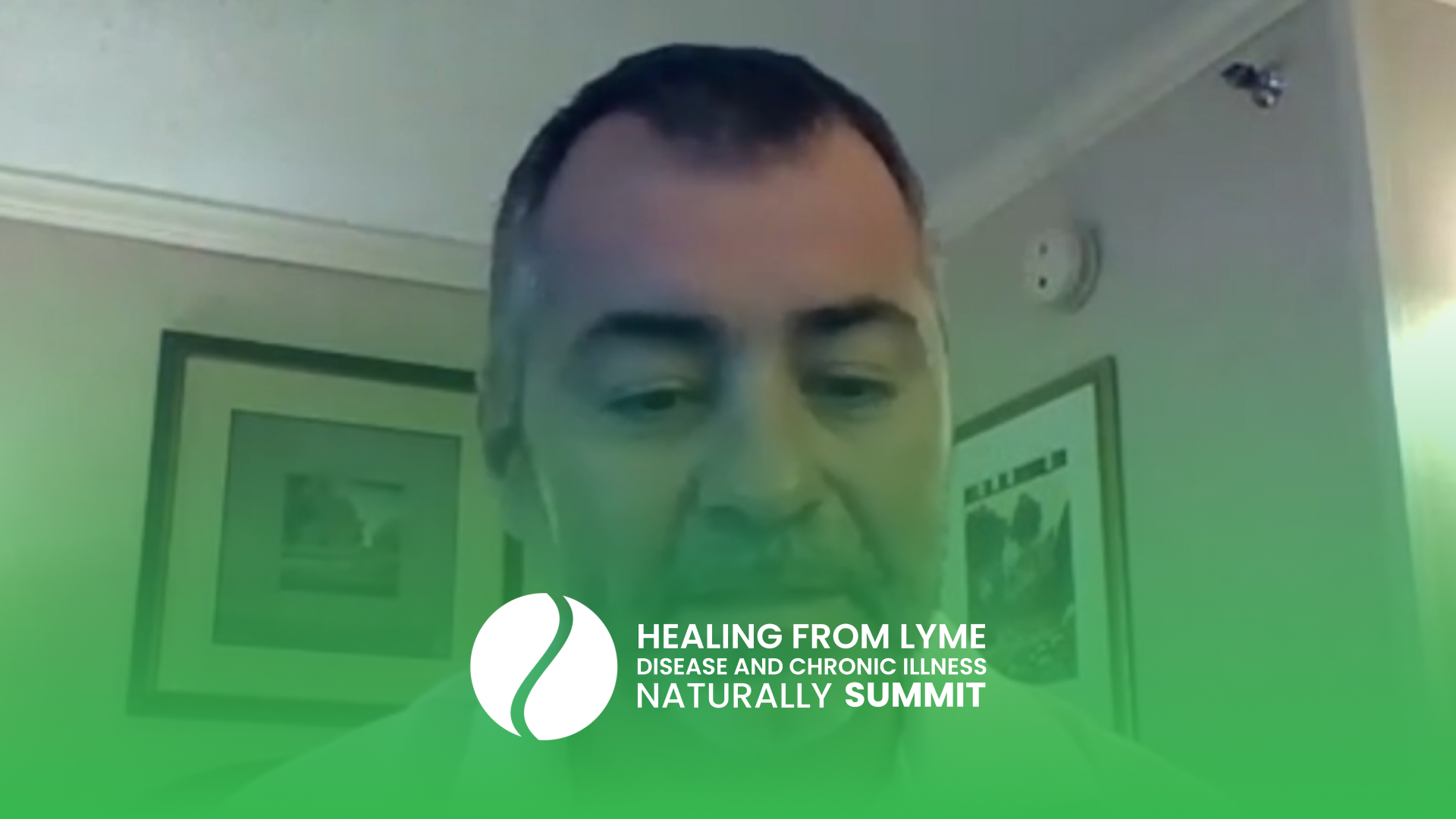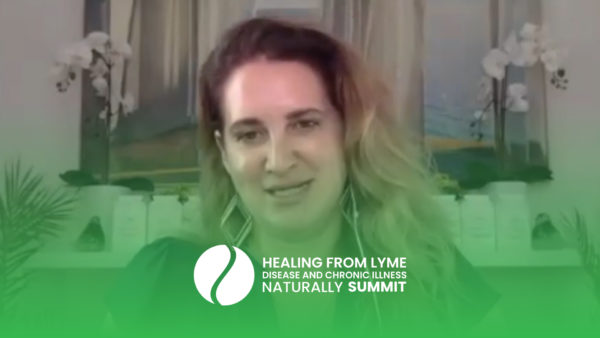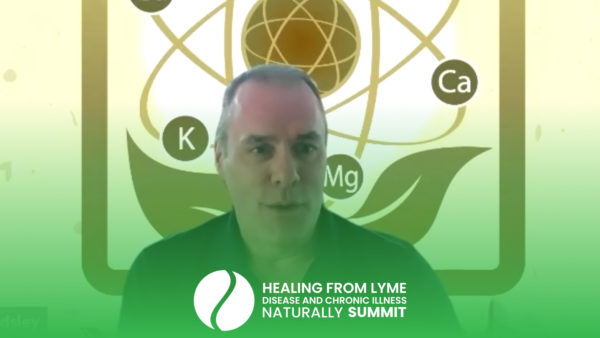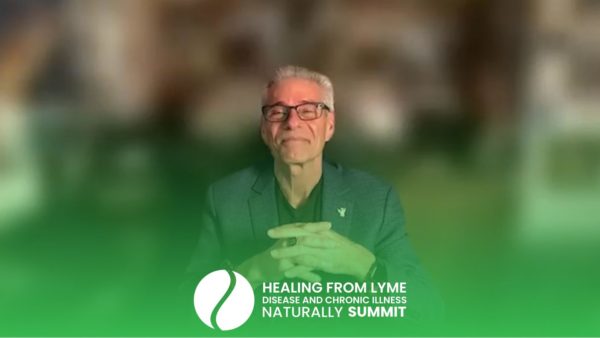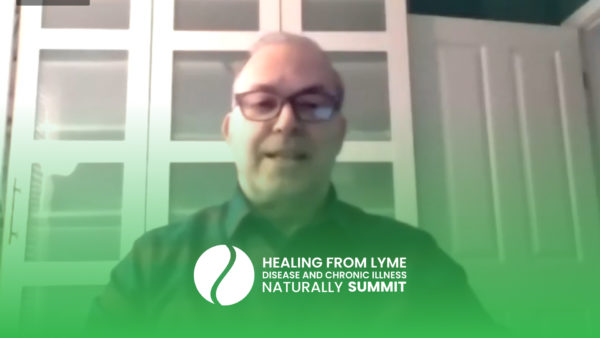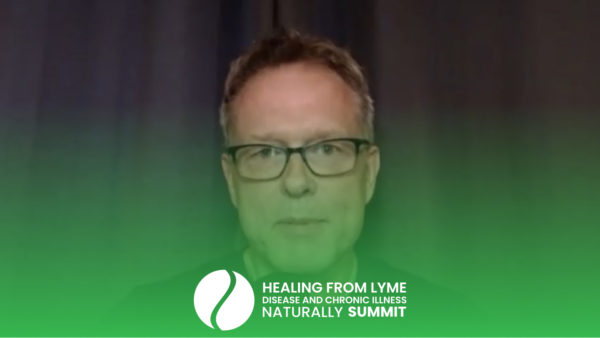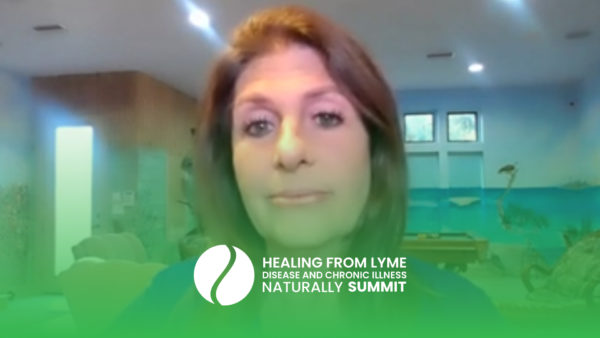Join the discussion below
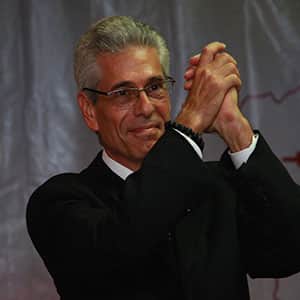
Rob Besner, PSc.D, Co-Founder and Chief Science Officer of Therasage, has always been an advocate of natural health and wellness. Graduating from Boston University in Pre-Med, Engineering, Psychology and Business, he continued onto post graduate work at Case Western Medical School and Holistic Medicine After many years of illness, Mr.... Read More
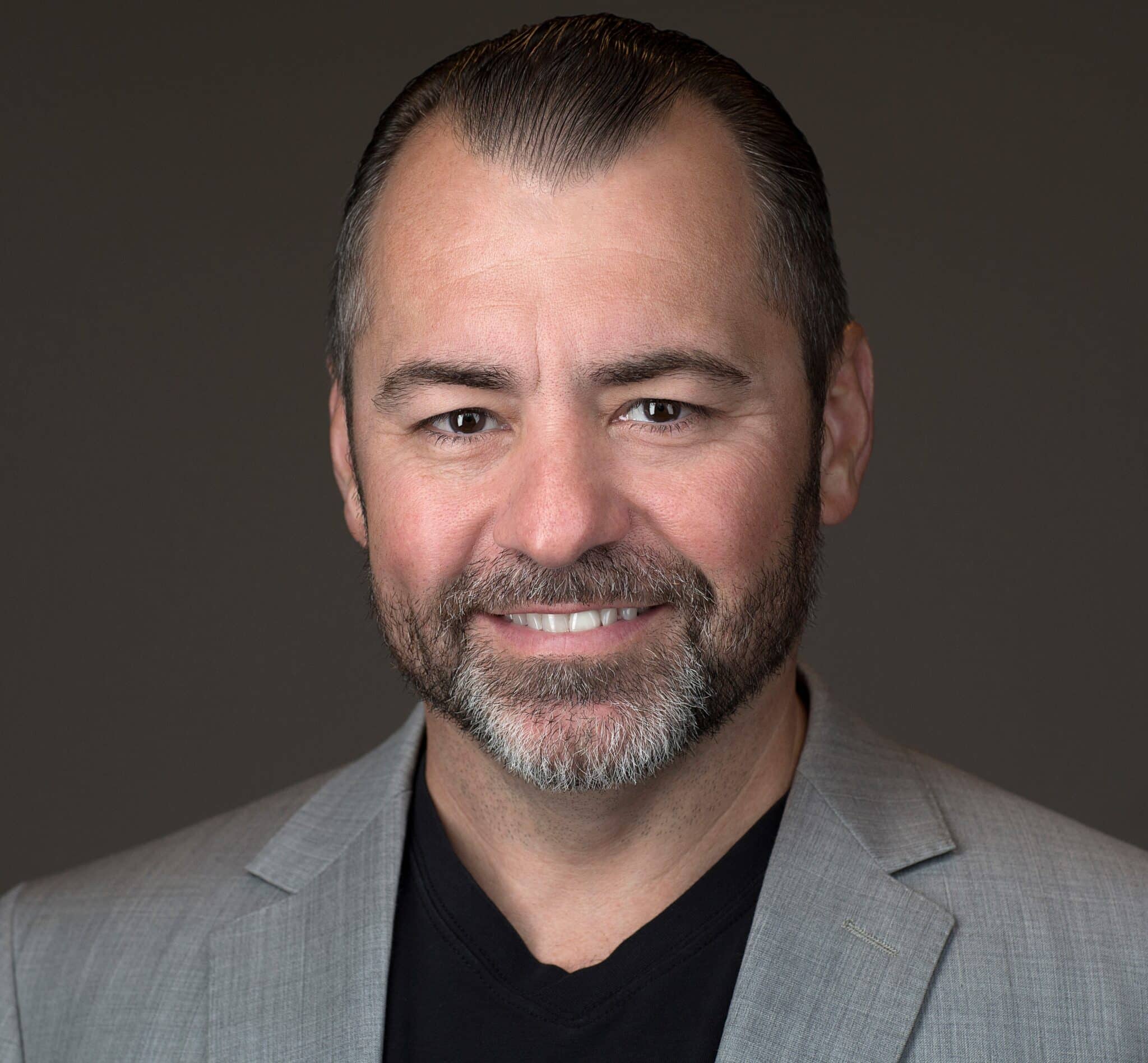
Dr. Nathan Bryan is an international leader in molecular medicine and nitric oxide biochemistry. Specifically, Dr. Bryan was the first to describe nitrite and nitrate as indispensable nutrients required for optimal cardiovascular health. He was the first to demonstrate and discover an endocrine function of nitric oxide via the formation... Read More
- What is Nitric Oxide and how it works?
- Why you need Nitric Oxide?
- How to add Nitric Oxide into your life Hyperbarics, IV Ozone, and activating your immune system?
Related Topics
Chronic IllnessRobby Besner PSc.D.
Hey, everybody, it’s Robby Besner, back with another episode in our Lyme series. Today, I have one of my best friends, and he’s awesome. It’s my words, but I’d say he’s probably the world’s authority on a transient gas that the body makes called nitric oxide. He’s written a bunch of books. He’s got a bunch of patents, I think it’s more than 20 patents, on the discoveries that he’s made over time. Well-educated, a doctor, amazing guy, a philanthropist. I love him, I love his family. I wanna introduce my dear friend, Dr. Nathan Bryan, to the screen, to the Healthy Hotline. Hey, Nathan, how are you doing today?
Nathan S Bryan, PhD
Robby, I’m great, thanks. Thanks for that wonderful-
Robby Besner PSc.D.
Awesome. Thanks for taking out the time to be with us and share your words of wisdom. As we mentioned before, the Lyme series, there’s a really broad base of Lyme community, and earlier today, I was on with one of my dear friends in Sweden and he’s got a huge network, and we’re bringing this presentation, this campaign, to the world, not just to America. And so the topic that you’ve embodied yourself with, that is symbolic of you, in a sense, ’cause when I think of you, I think of nitric oxide, as many people out there.
And if you’ve never heard Dr. Bryan talk on stage, he’s probably one of the best presenters I’ve ever listened to. So he’s an innovator and he’s a pioneer in the field. So it’s not just that he’s researched it and developed a whole bunch of solutions, but it’s ongoing. He’s constantly raising the bar, and that’s one of the things that I love about him, besides his just general quest to try to help people and humanity through his work and also just in general. So Nathan, tell us about nitric oxide. First off, give us a little backdrop about Nathan Bryan, a little bit of your background, and then bring us forward to today, the things that you’re doing, and then let’s dive in because we only have a spare moment we’re together today, and I know that you’ve got a huge schedule. So please tell us about Dr. Nathan Bryan.
Nathan S Bryan, PhD
Thanks, Robby, I’m a Texas, boy born and raised. Went to the University of Texas at Austin, got a degree in biochemistry from there. I went to LSU Health Science Center in Shreveport with a PhD in molecular and cellular physiology, then spent some time in Boston at the Whitaker Cardiovascular Institute at Boston University School of Medicine, and then went back to Texas, and I joined the faculty of UT Medical School in Houston in 2005, I think it was, and really, that started my quest in discoveries and innovations in nitric oxide.
As you mentioned, I’ve got several dozen issued patents. We’ve commercialized a lot of these technologies over the years, but yeah, now I’m at a place, I’m basically retired and resigned from academic medicine and research and I’ve spent, I guess, more than 15, almost 20, years in basic science research, and now my motive and mission is directed toward advancing the science, informing and educating the masses on the importance of nitric oxide. I think what you guys are doing in the Lyme community is transformative.
I think it’s much needed because what we’ve been able to understand over the past 20 years, not only as it relates to Lyme disease, but any disease, whether it’s cardiovascular disease or diabetes or whether it’s viral infections, bacterial infections, we understand the biochemistry and the physiology to the extent that now we can actually intervene and fix a lot of these sick patients that previously had very little hope. And so that’s what I hope to share today is the knowledge we’ve learned over the past 20 years and how we can implement this into the Lyme community and give people hope, but more importantly, give them the strategies of therapy that they can begin to get better and their body heal themselves.
Robby Besner PSc.D.
Wow, that’s saying a lot. So tell us about nitrous nitric oxide a little bit. How does it work, how does the body make it, and why is it so important? And then let’s dive in, unpack that a little bit, and then let’s dive in a little bit deeper so that people out there viewing today can really understand how important this is just for the body function, but also as a solution for helping people dig their way back to good health.
Nathan S Bryan, PhD
Yeah, that’s a good point. I mean, nitric oxide is really what’s responsible for oxygen delivery to every cell in the body. I think people understand how important oxygen is. If you don’t, just hold your breath for a couple of minutes, and you’ll realize how important it is, but oxygen is meaningless unless you have nitric oxide, ’cause it’s nitric oxide that allows oxygen to be delivered from the hemoglobin of red blood cells into the individual cells of the body. So if you can’t make nitric oxide, your oxygen levels drop, your blood pressure increases, you lose the regulation of blood flow to every cell and tissue in the body, so it’s naturally produced.
When we’re young and healthy, we make sufficient nitric oxide. The older we get, the less we make, and now we’re finding that even so-called young patients that are chronologically in their 20s and 30s may have the biological age of a 50- or 60-year-old, in terms of their vascular age or nitric oxide. And to the contrary, Robby, people like you and I, who pay attention to our health and do the things that help our body, we may have a chronological age in our 40s or 50s, but we have a biological age in our 20s. So now we understand how to intervene and can affect that, but nitric oxide is critical. It’s a signaling molecule. It regulates blood flow, blood pressure. It’s how our immune system fights off invading pathogens, whether it’s the bacteria from Lyme disease or whether it’s a virus, such as coronavirus or influenza or parasites.
You need nitric oxide in order for your immune system to do its job, for the cardiovascular system to mobilize and isolate an infection or a bacterium so that the body can eradicate it. So what we’re finding is, not just in Lyme patients, but even in patients that are susceptible to COVID, is that, when you become nitric oxide deficient, you become susceptible to many diseases. Cardiovascular disease, the number one killer of men and women worldwide, become susceptible to coronavirus infection and the rapid progression of disease. I think it partly explains the reason why some people get really sick from Lyme disease.
Other people, it’s episodic. It basically boils down to what are you doing at that particular time? I think where you have an outbreak or when you get sick, it’s not allowing your body to heal itself, and when you work backwards from that and then give the body what it needs, the body’s actually able to clear infections and to do what it’s designed to do. So it’s a very simplistic approach to medicine, but it’s based on sound biochemistry and physiology.
Robby Besner PSc.D.
Well, I always liked taking the simple and the primal approach, and we’ve done that a lot with the elements that we’ve put into even the device development that we’ve done on our side. We overthink things, a lot of people out there. And even the viewers today, some of them are not feeling so good, and generally, when you’re not feeling good, besides that sense of desperation, you’re not clearly thinking to make the proper choices.
And that’s really part of the reason why we’re doing this Lyme series, to bring educated people like yourself that have vast amounts of experience in healing people to give people direction that are listening today and give them hope. And you’ve got real solutions that you’ve already developed and are out there and are continuing to do that. So we’re gonna get into that in a few minutes, but more importantly, the Lyme community at large, the co-infections, and aside from unpacking the concept of having an imbalance in the body, you’ve just articulated and told us about easy ways to just get back on track, but the nature of an anaerobe or a microbe, they either starve your body of oxygen and in itself, they thrive in a very low-oxygen environment.
That’s their home, they love that, and for that reason, the co-infections, Lyme, they like to burrow and hang out in your joints and in the areas of your body that have the lowest amount of blood flow, thus the lowest amount of oxygen. If you pile on the fact that you’re aging and that, in the aging process, your body actually produces less nitric oxide and you have less of a transport system to get oxygen into your blood, into those areas that are low-oxygen anyway, you’ve got a perfect storm created for the thriving of these imbalances or Lyme disease or co-infections.
So this is the essence of why oxygen therapy is such an amazing therapy for Lyme patients in general, and what you’ve created is the easy way to get there, aside from ozone therapy or hyperbaric, which they’re wonderful oxygen therapies, but you have to outpatient for it or it can be expensive. The things that you’ve created are home solutions, like things that I can do for myself to improve my health and mostly my oxygenation, that piece, so let’s talk about that a little bit. Why is oxygen therapy so important in general? I mean, you’ve answered part of it already. Without it, we can’t really live, but it’s particularly important for the Lyme patient, so can we dive into that a little bit more?
Nathan S Bryan, PhD
Sure, we know the human body’s made up of both human cells and bacterial cells. In fact, the microbiome, the bacteria that live in and on our body, outnumber our own human cells 10 to one. So this microbiome is designed to do the things that we as humans can do or to metabolize things that we can’t, but when there’s a disruption in the microbiome through a bad guy, an infiltration of an anaerobe, then that disrupts this community. So then what happens is these bugs get in there and create an environment that’s advantageous to them and not advantageous to the good bacteria, and I think most infectious bacterium and even viral infections, they like, as you said, a low-oxygen environment, low-pH, acidic. It basically walls themselves off from our own immune system.
So oxidative therapy works because you’re basically oxygenating that environment, and if you look at the treatment and modalities that people use, whether it’s hyperbaric or IV ozone, I think we’ve been able to enhance that because, whether you’re using hyperbaric or high pressure to push oxygen into those hypoxic regions, if you use nitric oxide and basically open up the small blood vessels, the capillaries, any oxidative therapy from then on is gonna be improved because you don’t need the high pressure at that point because you’re opening up the small blood vessels and actually allowing the oxygenation of that micro-environment where the bacterium or the virus may be harboring itself. And once you do that and your immune system is functional, your immune system goes in and recognizes that invading pathogen and basically eradicates it. That’s how the body’s designed to work, but dependent upon that whole process is getting blood flow and activating the immune system and getting the immune system activated to where it can actually kill off the virus, or the bacterium, in this particular thing.
Robby Besner PSc.D.
Wow, so I’m a Lyme patient and I’m having a Herx episode. I overdid it, or even some of the therapies that are given to me by my practitioners, they’re designed to start to rebalance your inner microbiome. I hate using the word kill the Lyme because Lyme isn’t really the enemy. It’s not the war against Lyme. What it really is is talking about getting re-centered and re-balancing your microbiome. And because many of these organisms, as you pointed out, there’s more that are around us and on us than of cells that we have, which is trillions. So they’ve lived in harmony symbiotically since the beginning of life. And so we’re just starting to discover how important they are in our normal functions. So where do I start? What are some of the simple ways that I can start to make myself feel better through nitric oxide therapy, some of those solutions and some of the things that you’ve created that don’t necessarily cost a lot of money and/or can start to get myself back on track to good health?
Nathan S Bryan, PhD
Yeah, let me distill it down even simpler. So people get sick, whether it’s exposure to a tick bite and Lyme disease or coronavirus or even cardiovascular disease, for two reasons and two reasons only, your body’s missing something that it needs, or it’s exposed to something that it doesn’t need. So if you address those two fundamental issues, the body heals itself. So for instance, in Lyme patients, obviously, they’re exposed to something they don’t need, and that’s the bacterium caused by the Lyme disease or the tick bite. So what do you have to do to do that? You have to, obviously, activate the immune system, you have to get circulation and blood flow wherever that particular bacteria may be harboring itself, and the only way you can do that is through dilation of the blood vessels and opening up and perfusing that hypoxic region so that then the immune system recognizes.
It can activate itself and go in and kill that bacteria, and part of how it does that is it generates the macrophages and the neutrophils, part of our immune system, generate a lot of nitric oxide in that local environment. It shuts down bacterial respiration, it binds to the iron sulfur centers of the bacteria, and they can no longer respire, and that’s a well-elucidated mechanism of action of the antibacterial and, really, antiviral properties of nitric oxide.
But if your body is deficient in nitric oxide, there’s no way to overcome that, so what I’ve always been trying to do for the past 20 years is develop technology that, if your body can’t make nitric oxide, then we have to do it for you, and then really understand the enzymology to the extent that we can fix the body’s ability to make it on its own, and so that’s what we do. We have nitric oxide technology in the form of a lozenge. You can put it in your mouth. It’ll dissolve over four to five minutes, but during that time, we’re generating nitric oxide gas, we’re opening up the small blood vessels, and you can help eradicate the infection, whether it’s a viral infection or bacterial infection, just by giving the cardiovascular system and the immune system access to that side of infection, and I think that begins the process.
Then you give your body what it needs, and I think the devices and technology you guys have developed, obviously, enhance that even more because exposure to red light, certain wavelengths of light, the heat, fevers, are part of our way of the body eradicating infections, and then the wavelengths of light you guys are using actually enhance nitric oxide production. So I think everything we do revolves around mobilizing the immune system, getting oxygen and nutrients to individual cells of the body so that the body can do what it’s designed to do, and in this particular case, it’s eradicating the bad guys, restoring the balance of the good guys, and living in harmony, in homeostasis.
Robby Besner PSc.D.
The nature of these bacterias, parasites in general is that they use body resources, and so what you said is super important to everybody listening because if you know the source, let’s say the source we’ve discovered is Lyme and/or the co-infections, okay, so we’ve got this imbalance out there, and then we also know that they’re using some of your life resources. And so through a simple blood test and hair analysis and different ways, you can figure out what is depleted. So if we can get the source under control somewhat and then we give the body what it needs, what’s been deficient or is depleted by the imbalance in your microbiome, then, like you say, you’ve now created that healing platform that our actual deliverer gave us to start with, right out of the womb.
Nathan S Bryan, PhD
That’s right.
Robby Besner PSc.D.
And then we bounce back because that’s what the body wants to do. This is my theory, I’m just gonna put it out there, but there’s many approaches to working with Lyme patients, in terms of therapies, and one that’s been traditional has been using different cocktails of antibiotics and so forth, and it works for a time. It’s particularly nice or critical if you first discover within the first 30 days or so of being exposed to Lyme or the co-infections. If you use a strong antibiotic, you can knock it out and never get symptomatic, but then there’s a price that you pay, and that is that the antibiotic maybe go after the underlying source, but also kills beneficial bacterias in the same process, creating that imbalance again.
So balancing out or rebalancing this microbiome, creating that homeostasis, as you say, is super important. What I love about what you do is taking the whole discussion about antibiotics, pharmaceutical, synthetic approaches, which can work and sometimes for a short time. Sometimes they’re really effective, and I’m not gonna comment either way on that. I love going after the underlying source with nature. The bugs, they’re not surprised about oxygen. They’re not surprised about heat or sunlight. This is just natural effects, but when you can give them doses of oxygen through your delivery system, nitric oxide, for instance, if your body is just depleted, you’re oxidative stressed and so forth and you can create that balance again, you’re actually coming through the back door and hitting these guys, the bad bugs, by surprise, not with the synthetic, ’cause they’re smart.
They feel the imbalance chemically from an antibiotic and they burrow into a cystate, go into your soft tissue, you go into remission, and then they come back out at some later date, when they see that the coast is clear. What I’m looking at are therapies that are recruiting nature so that we can actually attack them front-on, from the back, from the windows where they they’re not suspecting anything, because if you give them oxygen and they don’t like oxygen, wham, you’re helping your healthy body, your healthy tissues, and you’re also knocking out the invader or rebalancing that microbiome. So I think today, talking to you and discovering these things and people listening, they’re simple. They’re using and recruiting the body physiology as it’s designed to do. This is our playbook, and through aging and/or through genetic proclivities or maybe epigenetics with changing environment and how that affects us, those mechanisms are impaired, so your solutions are so relevant because you’re offering a way to jumpstart the body, a way to get to the underlying source.
It’s not even a sneak attack. It’s like hitting them straight on with nature. So they’re somewhat surprised and they’re going, “Oh, yeah, I remember that oxygen.” They have nowhere to hide anymore because you understand what they don’t like and you’re giving them what they don’t like, and they’re organisms. They’ve got lifespans themselves. My mother used to say this to me when I was very young. She said, “Son, I love you so much, “but I’m not gonna make my house so comfortable for you “so that, after you’re done with college, “you just wanna come back and live with me.” So that’s the lesson here. It’s like, let’s make our internal environment really healthy for us, but uncomfortable for these bugs so eventually, they just die off or go away or find someone else to annoy, and I think you’ve got an amazingly great solution.
So I love the nitric oxide, I love oxygen therapy in general for just general health, and what you’ve done is epic, in terms of contribution, not just in your own research, but also in the body of research you’re doing and how important it is and how more important it’s coming in the world that we’re living, in the toxic environment we’re living in these days.
Nathan S Bryan, PhD
Yeah, we employed these strategies of applied physiology. As you said, modern medicine is applied pharmacology, and there’s always collateral damage, even with antibiotics. So if you can recapitulate physiology and basically give the body what it needs, it’ll eradicate the disease itself. And so I think it’s doing two things, number one, recognizing what you’re doing, what the individual patient’s doing that may be disrupting their own nitric oxide production, and that’s mainly two things, using antiseptic mouthwash and using antacids. Both of those have been shown to shut down nitric oxide production.
So I tell any sick patient if you’re using mouthwash, you have to stop. Causes your blood pressure to go up and decreases nitric oxide production. If you’re using antacids, you have to stop. Your body can’t make nitric oxide without stomach acid. Stop doing the things that disrupt it and then start doing the things that promote it. So you have to get up and you have to move. You have to do moderate physical exercise. You need sunlight. You need light therapy. You need to sweat and excrete and get rid of the toxins, and those simple things, along with some very simple, cost-effective strategies that we’ve developed, that you guys have developed, really provide life-changing modalities for patients that previously were given a very poor prognosis and outlook and really lost all hope, and hope is a very powerful force.
Robby Besner PSc.D.
Yeah, totally, I think that that’s a big thing, and when you’re sick and you have chronic challenge, it’s like that ethereal hourglass. You’re just watching grains of sand, which is your life, going through the hourglass and slipping away from you, and it’s so nice to know and inspiring to know that there is therapies, there are interventions like you’ve created out there that really can get your body back on track, it’s amazing. I’ve listened to you over the years in many presentations, and there was one segment that you talk about different food sources that support natural production, body health, and so forth, and what was really unique, you could take one broccoli, one plant or one vegetable, and if it’s grown in different parts of the country, based on the light and the nutrition of the soil, it’s gonna have different nutritional elements.
So people think, “Well, I’m eating broccoli. “It’s really good for me, “and it’s gonna do this and it’s gonna do that,” and what you pointed out is that not all broccoli is the same, and that’s so freaking important for people to understand because when they’re trying so hard to supplement themselves with good nutrition and they think they’re doing everything right, they’re not quite getting what’s on the label, in terms of their digestion, and so I love that and just what you just talked about.
I mean, mouthwash, you see the commercials. You think, “Well, what’s worse, “having bad breath “in social environments “or killing off one of the most essential things “that the body does, like producing nitric oxide?” No one really understands that, and certainly, the people that make mouthwash aren’t telling us that, so we need someone like yourself to actually point out these simple things that are just household chemicals, household routines that we go through, aren’t necessarily so good for us.
Nathan S Bryan, PhD
Yeah, I think people have good intent, I mean, and it may be surprising, Robby, but the media can misinform us at times, I think. A lot of these paid ads and commercials talk about fresh breath and mouthwash, but the data are very clear. You use mouthwash, it disrupts nitric oxide production and your blood pressure goes up. 200 million Americans have an unsafe elevation in blood pressure. 200 million Americans use mouthwash every day. It’s not a coincidence, and I think it’s unrecognized. And the other thing is fluoride toothpaste, antacids. If you’re sick, you have to stop doing the things that are not allowing your body to heal itself, and these are things that people do on a daily basis with good intent, but you have to understand, there’s always collateral damage of disrupting the microbiome or human physiology. So let’s get out of the way and let the body do what it’s designed to do.
Robby Besner PSc.D.
Fantastic, love all of this. Nathan, your time is really valuable, and I love the elements and the discoveries that we’ve talked about today. We only have a few minutes left, so I was wondering if there’s anything we left out that you feel that you need to let us all know about. Actually, first off, how do we find you? I mean, I found you, and that was a deliverance. That wasn’t serendipitous. We were meant to know one another in a big way, but if people wanna know what you’re doing these days, tell us, what’s your website? Can we email you, what’s the best way to get a hold of you?
Nathan S Bryan, PhD
Yeah, I’ve got an educational, informative website, it’s drnathansbryan.com. There’s a six-minute video on there that informs and educates on nitric oxide. You can follow me on social media, Instagram, @drnathansbryan, so that’s really the main way. You can Google me, I think my email’s probably on there. I get dozens, if not hundreds, of emails every day, but Robby, I think the one thing I’d like to mention is we have a drug in phase III clinical trials for COVID, and COVID is, obviously, an infectious disease, a viral infection, but the same comorbidities in patients that are susceptible to coronavirus infection are the same ones that are probably susceptible to Lyme disease, bacterial infections, and what we’re finding is that these patients that are susceptible are deficient in nitric oxide.
It explains that population, the African-Americans, the ones with underlying comorbidities of heart disease, kidney disease, high blood pressure, diabetes, and so we’re repleting nitric oxide in these patients. We’re seeing them getting better. We’re seeing their blood oxygen levels go from the high 70s, low 80s to upper 90s within five minutes of our nitric oxide therapy. So that is unequivocal, in terms of the benefits of nitric oxide, and it’s providing the oxygenation that these patients need with the COVID infection. So I think this has widespread utility because every single chronic disease has a component of low blood flow, low oxygen, and we can now correct that, so I’m excited about that. You can find more information about that study at aacovidstudy.com.
Robby Besner PSc.D.
Wow, and man, you guys out there listening, you have to check this out because this is a game changer. What Dr. Bryan is doing now is really going to really change the whole fabric of the way that we look at building the immune system, helping our bodies naturally recover from challenges. Coronavirus is certainly something that’s present, but the idea of viruses, viral infections, bacterias, all these different things, mold, it’s not a new story.
It just seems to repeat itself with a different title on it, and the idea that you can come up with a real solution that’s not just applied to the current pandemic that we’re dealing with, but just holistically, can help the body support itself, build that strong armor, build that big shield, and so the pathogen might be there knocking at your door, might try to get in, might get in for a short time, but at the end of the day, you’re gonna be the winner, and I really think that that is so amazing, and we so are appreciative of you, Dr. Bryan, and the things that you’re doing and the effort. It really is unwavering effort in your mission to continue the education, raise the bar on the research, come out with new developments, come out with new bio-sciences and applications that we can use every single day to make a difference in our lives. You’re amazing, thank you for joining us today.
Nathan S Bryan, PhD
Thank you, Robby.
Robby Besner PSc.D.
And we support you a million percent. You guys out there listening, this guy is in the know. He’s a happening dude, and you have to get on board. Whatever he’s doing, make sure that it’s a part of your lives. Dr. Bryan, thank you so much. Really appreciate it.
Nathan S Bryan, PhD
Thank you, Robby. Keep up your good work.
Robby Besner PSc.D.
Have an awesome day.
Nathan S Bryan, PhD
You, too.
Robby Besner PSc.D.
Hey, everybody, it’s Robby Besner. Thanks so much for joining us today. Please share this content with anyone that you think might benefit from it, and we’re looking forward to having you with us tomorrow for another great interview.
Downloads

